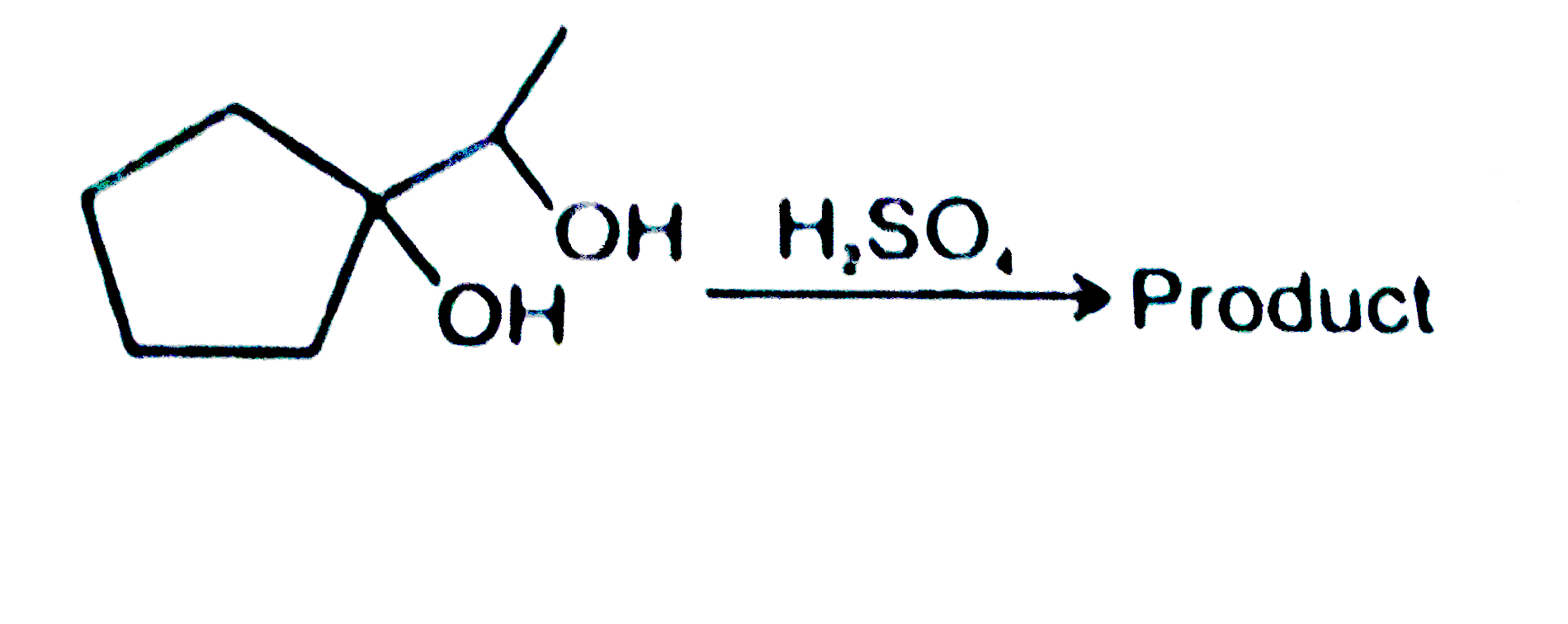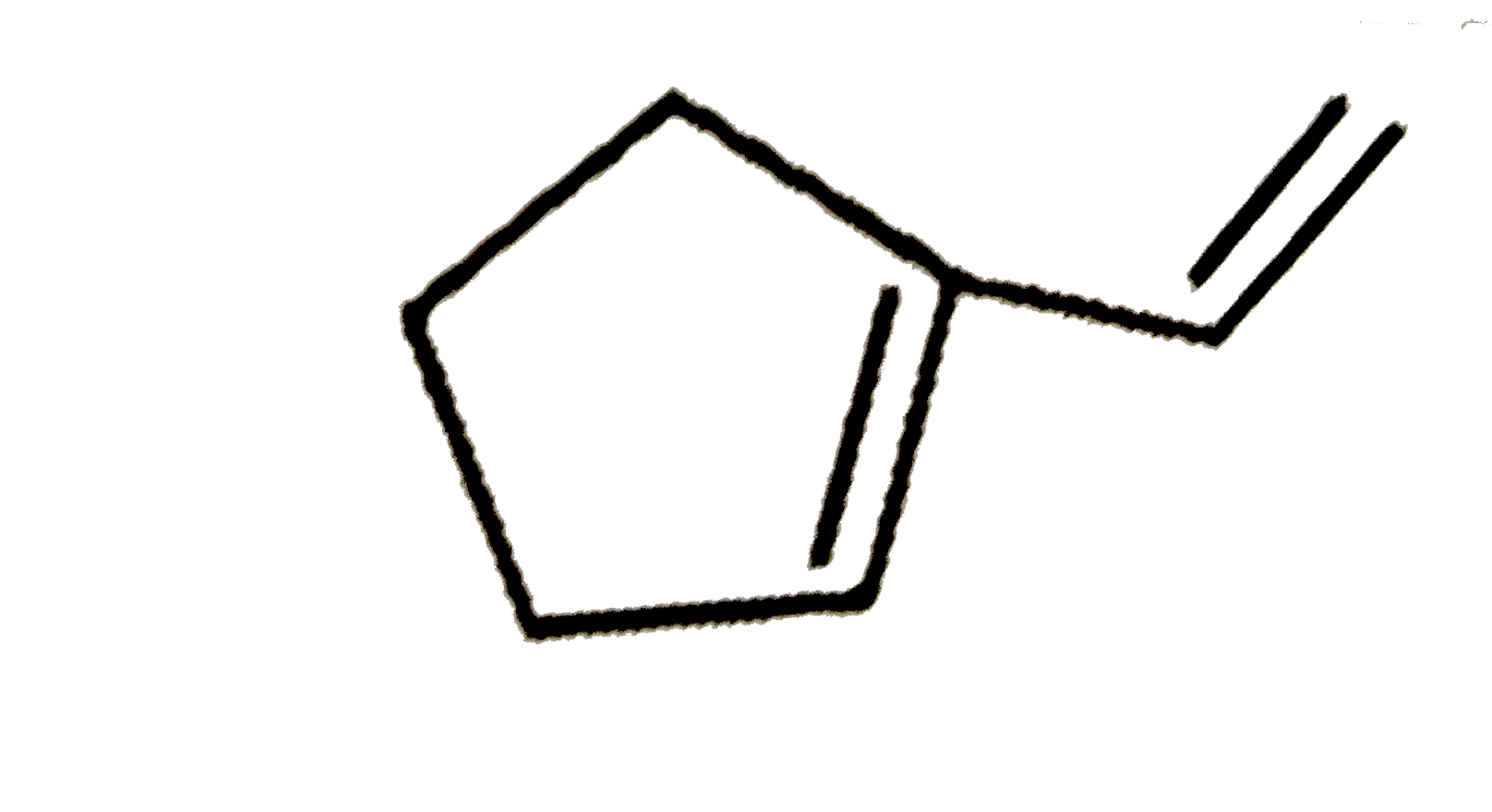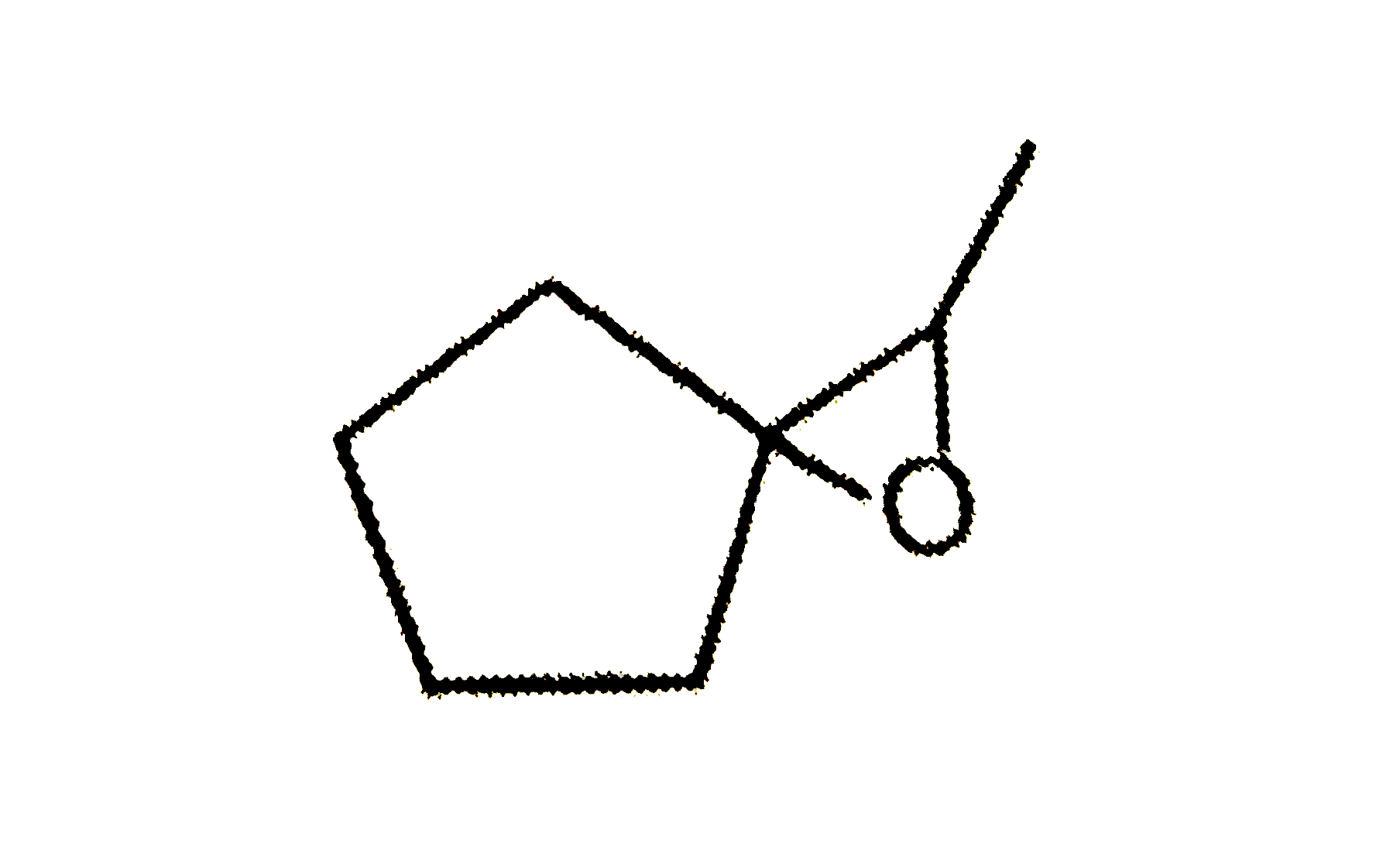Alcohols undergo acid catalysed elimination reactions to produce alkenes. Because water is lost in the elimination , this reaction is called dehydration reaction. Secondary and tertiary alcohols always give E1 reaction in dehydration. Primary alcohols whose -carbon is branched also give E1 reaction. The reactivity of alcohol for elimination reaction is tertiary alcohol gt secondary school gt Primary alcohol.
Identify the product in the given reaction :





The correct Answer is:C
Step by step video & image solution for Alcohols undergo acid catalysed elimination reactions to produce alkenes. Because water is lost in the elimination , this reaction is called dehydration reaction. Secondary and tertiary alcohols always give E1 reaction in dehydration. Primary alcohols whose beta-carbon is branched also give E1 reaction. The reactivity of alcohol for elimination reaction is tertiary alcohol gt secondary school gt Primary alcohol. Identify the product in the given reaction : by Chemistry experts to help you in doubts & scoring excellent marks in Class 11 exams.
Updated on:21/07/2023Topper's Solved these Questions
- ORGANIC REACTION MECHANISMS-IVBOOK - RESONANCE ENGLISHCHAPTER - ORGANIC REACTION MECHANISMS-IVEXERCISE - Exercise-3 Part-1
18 Videos
- ORGANIC REACTION MECHANISMS-IVBOOK - RESONANCE ENGLISHCHAPTER - ORGANIC REACTION MECHANISMS-IVEXERCISE - Exercise-3 Part-2 JEE (MAIN ) OFFLINE PROBLEMS
10 Videos
- ORGANIC REACTION MECHANISMS-IVBOOK - RESONANCE ENGLISHCHAPTER - ORGANIC REACTION MECHANISMS-IVEXERCISE - Exercise-2 Part-3
10 Videos
- ORGANIC REACTION MECHANISMS - IIBOOK - RESONANCE ENGLISHCHAPTER - ORGANIC REACTION MECHANISMS - IIEXERCISE - APSP Part - 3
22 Videos
- PERIODIC TABLE & PERIODICITYBOOK - RESONANCE ENGLISHCHAPTER - PERIODIC TABLE & PERIODICITYEXERCISE - ORGANIC CHEMISTRY(BASIC CONCEPTS)
27 Videos
Similar Questions
Alcohols undergo acid catalysed elimination reactions to produce alkenes. Because water is lost in the elimination , this reaction is called dehydration reaction. Secondary and tertiary alcohols always give E1 reaction in dehydration. Primary alcohols whose β-carbon is branched also give E1 reaction. The reactivity of alcohol for elimination reaction is tertiary alcohol > secondary alcohol > Primary alcohol.
Which of the following dehydration product (major ) is incorrect ?
View SolutionPrimary alcohols can be obtained can be obtained from the reaction of the RMgX with
View Solution
Knowledge Check
Assertion: The relative ease of dehydration of alcohols following order:
Tretiary > secondary > Primary
Reason : Formation of carbocation is the slowest step of reaction.Aif both assertioon and reason are true and reason is the corrct explanation of assertion.BIf both assertion and reason are ture but reason is not the corrcet explanation of assertion.CIf assertion is true but reason is false .Dif both assertion and reason are false.Tertiary butyl alcohol can be prepared by the reaction of
Aacetadehyde and ethyl magnesium iodideBacetone and methyl magnesium iodideCformaldehyde and propyl magnesium iodideDbutanone and methyl magnesium iodide.
Discuss briefly, the relative rates of reaction of HBr with respect to primary, secondary and tertiary alcohols.
View SolutionWhich of the following reaction leads to the formation of secondary alcohol?
View SolutionExplain the mechanism of the following reactions :
Acid catalysed dehydration of an alcohol forming an alkene.
View Solution1− Chlorobutane on reaction with alcoholic potash gives:
View SolutionAlcohols react with active metals e.g., Na, K etc., to give corresponding alkoxides. Write down the decreasing order of reactivity of sodium metal towards primary, secondary and tertiary alcohols.
View SolutionAlcohols react with active metals e.g., Na, K etc., to give corresponding alkoxides. Write down the decreasing order of reactivity of sodium metal towards primary, secondary and tertiary alcohols.
View Solution
